Like cancer.
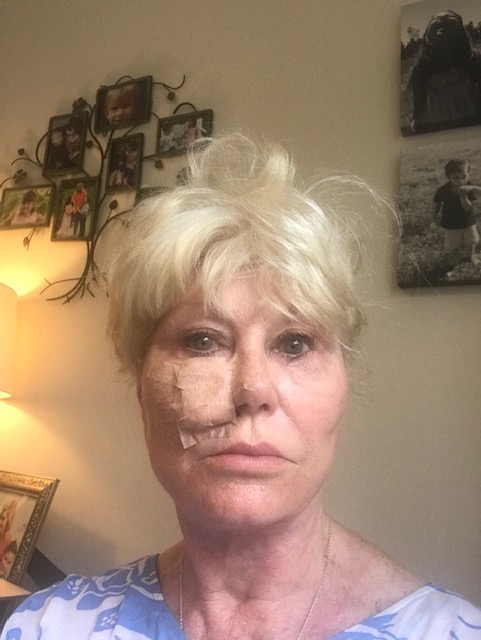
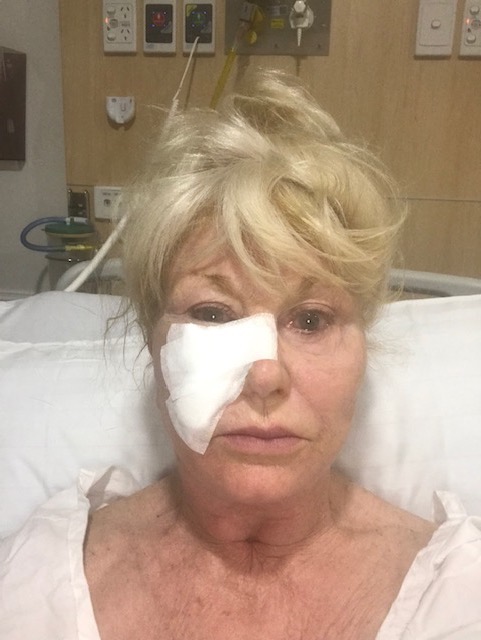
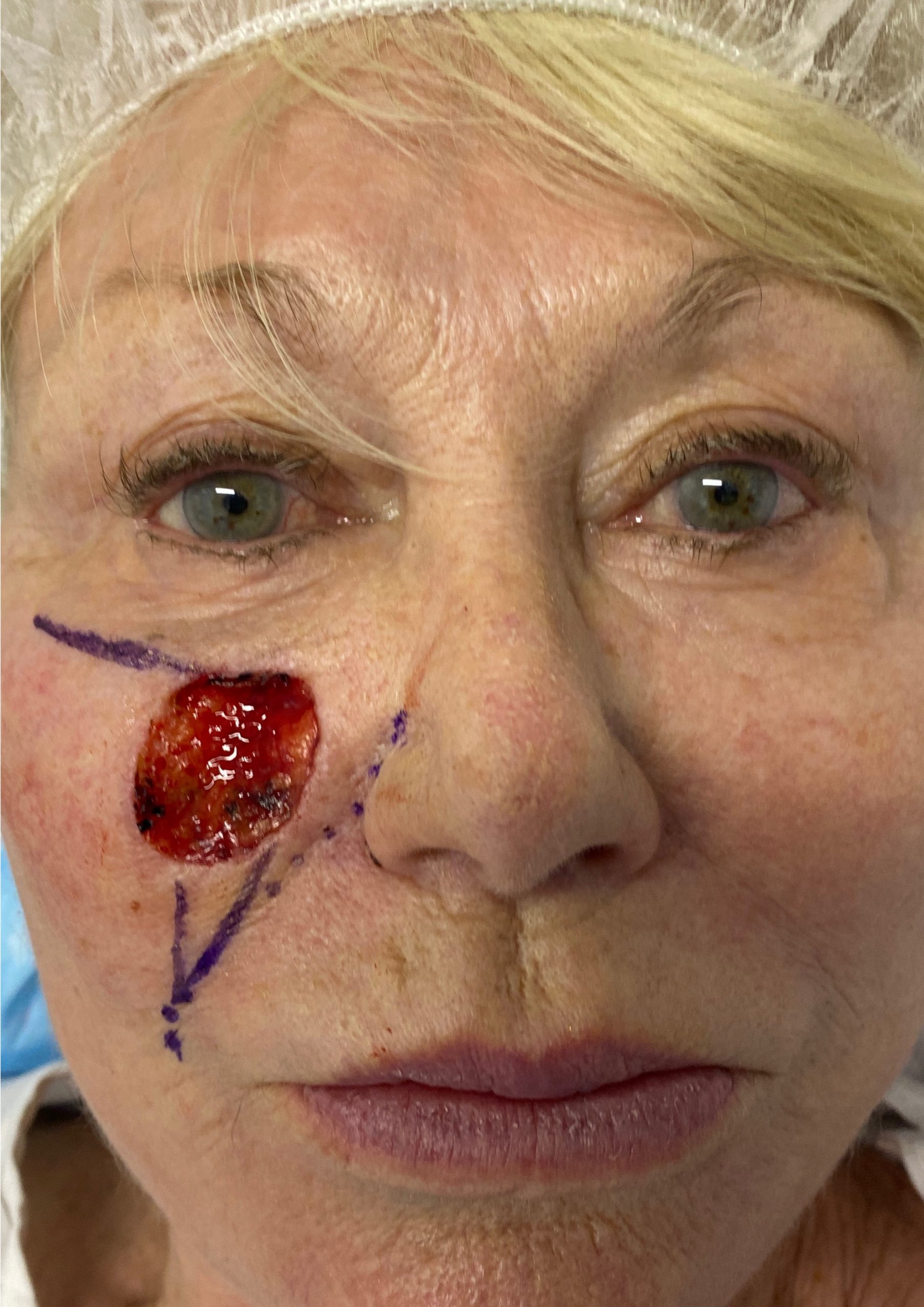
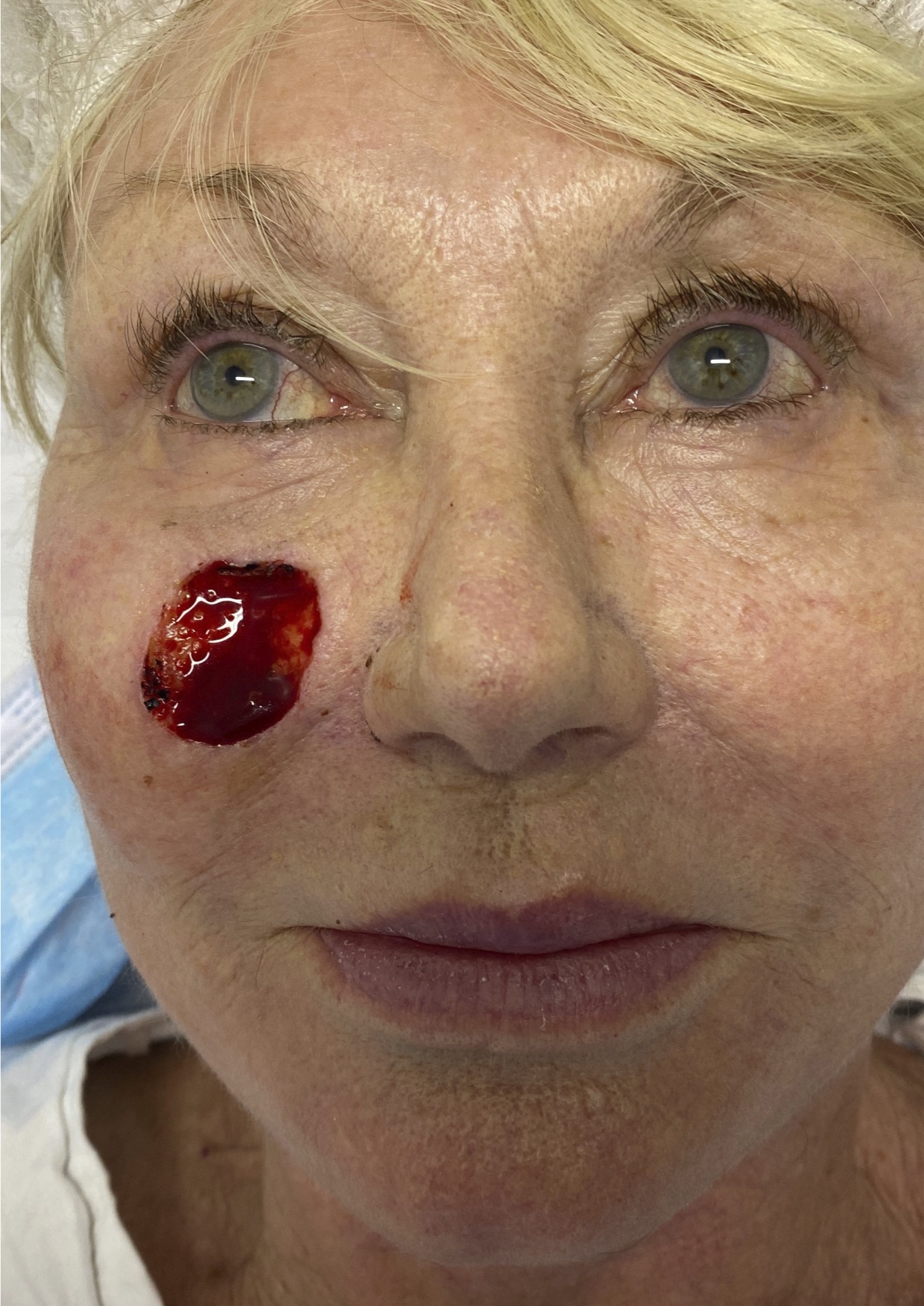
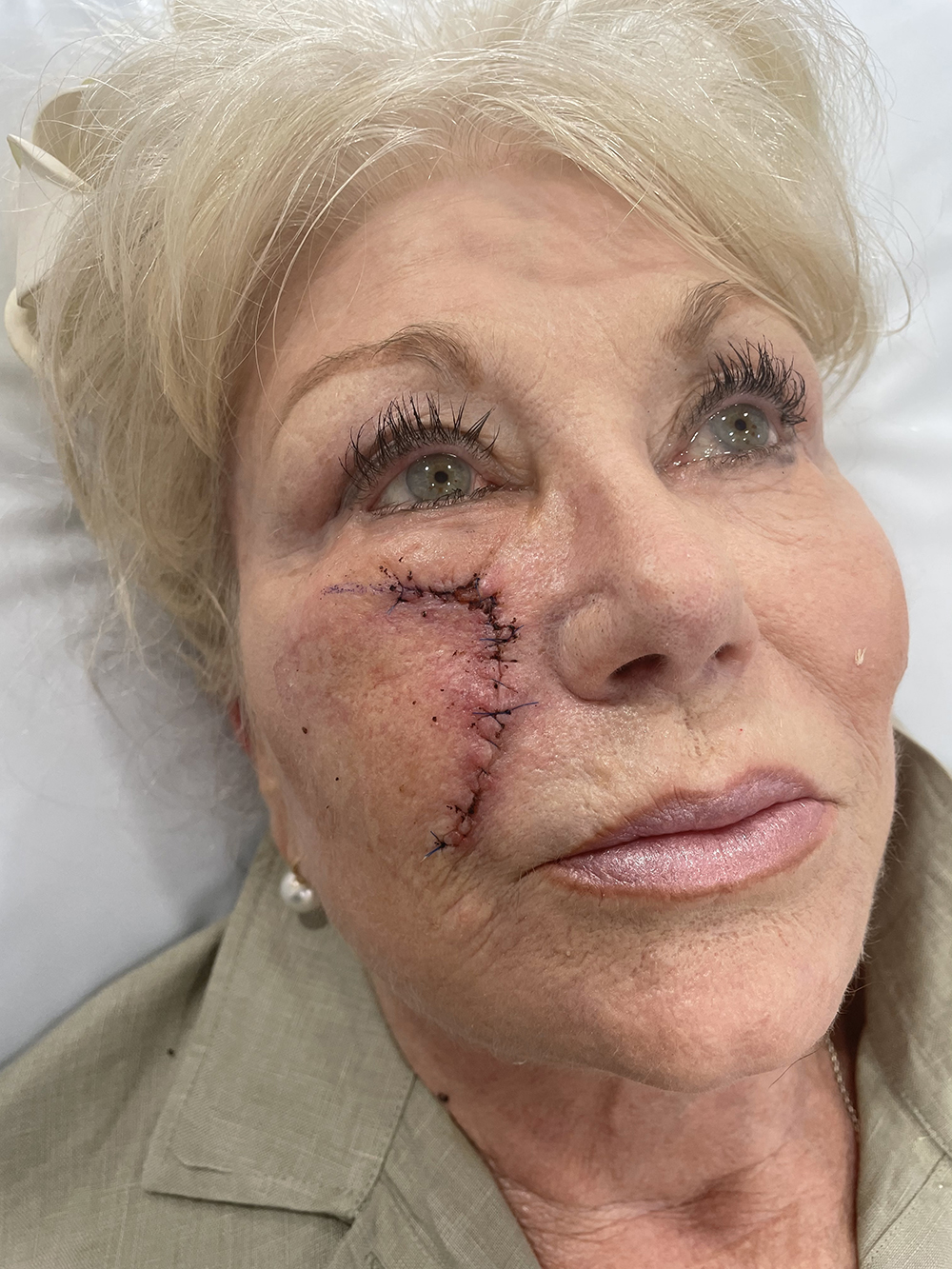

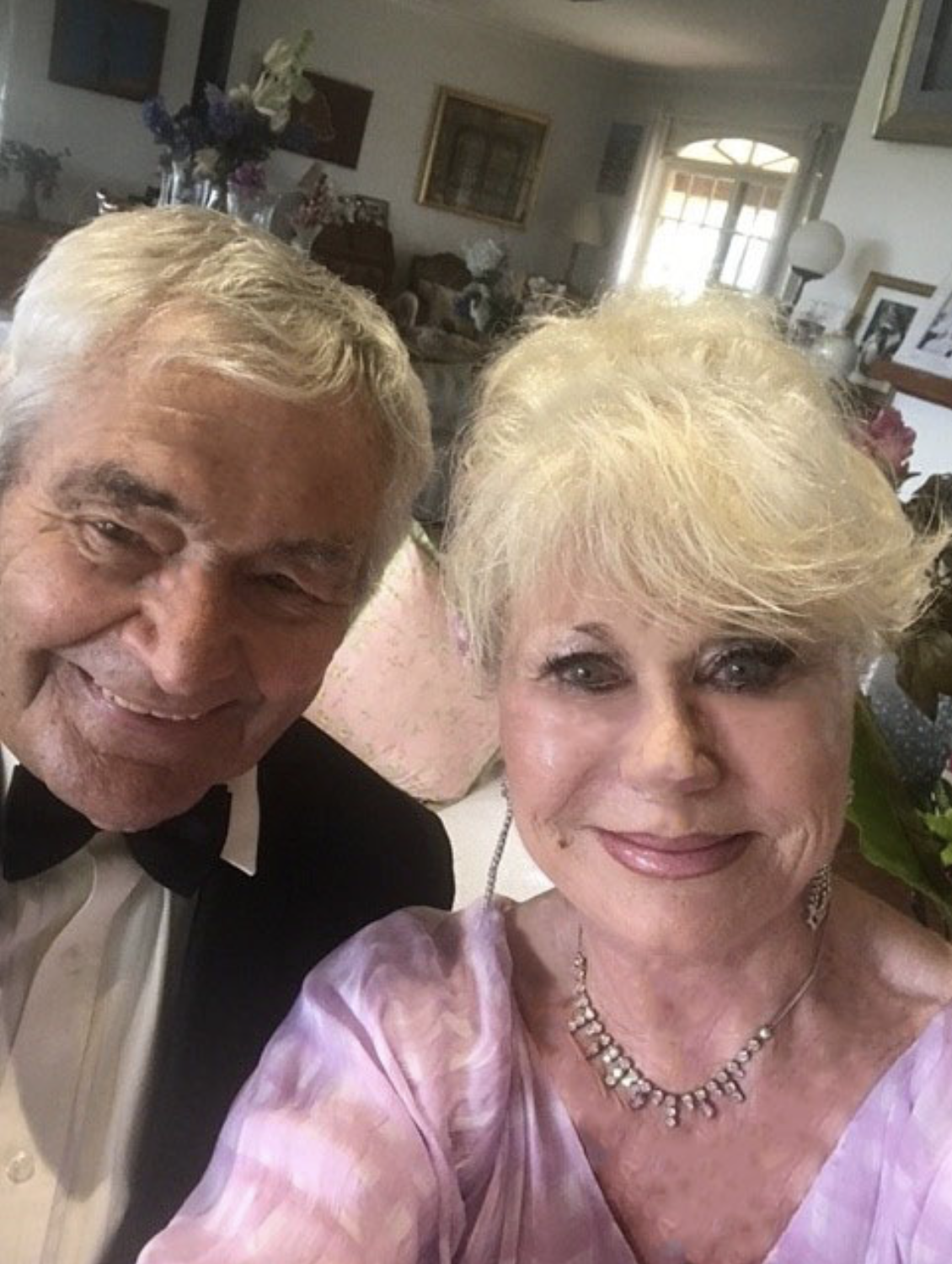
Covid shut down. I go nowhere, see no-one outside home. Months drag on.
Then I had to go to Port Macquarie to see the dentist for a delayed check-up. While out and about in the big wide world I thought I might treat myself to a facial.
I discovered that Brenda had sold the salon and the new owner, a lovely girl, Candy, was working with her getting to know the business and clients.
Candy asked about a small brown “stain” or birthmark on my cheekbone. Had I had it checked?
‘Oh yes, it’s been there years. I had it lasered off 10 years ago but it’s slowly come back. I was told it’s fine,’ I said.
She frowned but said no more.
The next morning, washing my face, I could see nothing unusual. Except a small black pore.
Two weeks later the black pinhead speck was still there.
My GP sent me to the dermatologist in Taree, Dr Rachel Walther.
She looked at my face, did a quick scan over my body and then said she’d like to do a biopsy on the “pinhead.”
‘Just to be sure,’ she added.
I popped in a week later chatted cheerfully to the friendly nurse, then Dr Walther broke the news – I had a Melanoma in situ, type Lentigo –maligna type.
Not good.
‘You mean a skin cancer?’ I was thinking of my friends who had skin cancers removed quite frequently.
‘No. A Melanoma. I will give you the name of a Mohs surgeon and plastic surgeon in Sydney. Call them as soon as you get home. I’ll send them a referral now,’ said Dr Walther.
Suddenly a “Go” button had been activated.
I soon learned that a melanoma in situ can spread far beyond what the eye can see. It’s invisible “extensions” cannot be seen but can be detected in some cases with reflectance confocal microscopy.
Because it can mimic a benign sunspot or age spot, and is very slow growing, it may go misdiagnosed or unchecked for many years, even decades. (As in my case.) They can be difficult to see and can be dangerous, as if they develop roots they have the capacity to spread into the lymph nodes and metastasize to other organs and be fatal.
Mohs Surgery
Mohs surgery is a special technique only used by specialist dermatologists who have undergone additional training in Mohs Micrographic surgery. I had a modification of this technique sometimes called ‘slow Mohs’ or staged serial excision where the tumour can be scanned and mapped before surgery and the “roots” tracked during surgery.
This is a staged serial excision where the tumour can be mapped and the “roots” tracked before surgery.
So in Sydney I first saw lovely Dr Niamh O’Sullivan, the Mohs surgeon. She explained the best treatment is the surgical removal of the cancer in staged serial excisions.
My melanoma would be “mapped” by lying under what appeared a giant microscope, which marked the outer edge of the cancer cells on my face – a “road map” to follow to cut it out.
Dr O’Sullivan explained that the results could take up to 48 hours to process after her first excision. If there were still a few cells showing, she’d go back in again to excise them. Helpfully she added, ‘ In the majority the cancer is cleared in one or two surgeries but the most I have had to go back was 5 times, so plan to stay in Sydney.”
Once all the cancer cells have been cut from my face, I have to wait a few days for Dr Leo Kim, the specialist plastic surgeon, to “close up.”
My pre-op meeting with the charming Dr Kim was a bit alarming. I know they have to give you the worst case scenario just in case but he carefully explained,
‘With your procedure there’s many challenging aspects. The location is right in the middle of your cheek and it’s very difficult to “hide” the scar anywhere else as I normally would. The size of “the hole” after removal will mean I cannot simply close it and skin grafting would result in a terrible aesthetic outcome, so I have to reconstruct it using your own cheek tissue which is not in abundant supply. Because it’s so near the eye on your cheek bone location, scarring could cause ‘ectropion’ which is when the lower eyelid comes away from the eye permanently which could cause long term problem with vision, at worst leading to blindness if not treated adequately.”
This was scary news. But I had to trust his skill and reputation.
Step one was attending Dr O’Sullivan’s rooms for the mapping of my cancer with the special imaging techniques. A purple marker was then drawn on my cheek “joining all the dots” – the map for Dr O’Sullivan.
Two days later I am in her operating room with a nurse and Dr O’Sullivan in a gown, mask and gloves, wielding a small knife.
We chatted as she gave me a painless local anaesthetic and we continued talking for the next twenty minutes or so as she skilfully cut, stopping to check and going back to cut again. I could feel nothing, but it seemed to me she was cutting a damned big hole for a pinhead spot on my cheek.
Cheerfully she explained, ‘It might be a small spot on the surface but underneath it’s like an octopus with spreading tentacles.’
This was creepy and scary to hear.
She finished, put a small skin-toned bandage over it and in a week I would see Dr Kim. I was warned I would most likely get a black eye, bruising and swelling and some pain. Dr O’Sullivan gave me painkillers and some healing medications to deal with the scar down the track.
I stayed in Sydney and it was lovely to see my grandkids after Covid isolation (we adults were vaccinated and tested and it’s been an anxious wait for the kids to finally get shots.) Having been forewarned by their mum, they were sanguine about half my face covered in a bandage.
I was to sleep sitting up as best I could. I slept like a rock. In the morning I felt fine but couldn’t bring myself to look in the mirror. I crept out to the breakfast room and said. . .’ ‘Well??’
The kids said G’mornng and went back to their breakfast. Gabrielle stared at me and said, “Nothing. You look the same. Save for the plaster. You’ll probably feel like hell this afternoon.’
But nothing changed – no pain, no swelling, bruising or black eye. Yay, Dr O’Sullivan.
Plastic Surgery
The following Monday I am at the hospital where Dr Kim operates. It’s busy, Covid rules in place.
I am put in a robe, feeling depressed. I don’t want a drooping eye. I’d rather have a scar. It’s 9.15 am. I try to read my mate Tom Keneally’s new book. I am in a cubicle with patients ahead and behind me on either side.
The nurse appears, is friendly and calm. She takes my blood pressure and looks alarmed.
‘I’m worried,’ I explain.
‘You’re in the best hands,’ she soothes.
And I’m wheeled towards surgery into a small annex – the next in line for Dr Kim.
Anaesthetist Dr Matthew Spencer, a cheerful friendly bloke comes to chat, asks a few questions then says. ‘I’m from Taree. Went to Uni in Newcastle.’
We are onto the subject of rising house prices and over development on the Midcoast when Dr Kim arrives with pen and paper.
He is gentle, caring, focused. He looks at my face (I still haven’t seen “the hole”) and does some sketches, figuring out the best way to achieve “the best result.”
He touches my shoulder. ‘I’ll do my best.’
I hop off the trolly and Matthew walks me into the operating theatre, we’re still talking city versus country.
In the large room with nurses and attendants, there are two other patients who are done or next in line after me. I hop on the operating bed.
Dr Kim appears, and everyone pays attention. Matthew leans down. ‘Ready?’
I don’t remember anything else, until I hear Matt’s cheerful voice. ‘Hey, all done. It went well, Di.’
Back in my cubicle triangle sandwiches and a cup of tea taste like a feast.
I feel fine. I take a selfie to see what I look like. All I see is a big white bandage. An hour later my friends Gary and Adi arrive who are conveniently driving to Port Macquarie and have offered to give me a lift home on the way.
I arrive home at sundowner time. Hugs and kisses, avoiding the bandage, from Boris and Mina (the dog.)
Again I have been warned of massive bruising, swelling, black eye and pain. I am armed with drugs.
Maybe it’s the peaceful Manning Valley, just being home and loved. But I suffer no discomfort.
In ten days I Zoom with Dr Kim. I have no issues. He says give it a bit longer and then Dr Walther can take out the stitches and he’ll see how I look. (On Zoom.)
I see Dr Walther and thank her for all she’s done. I couldn’t have had better care.
I lie down and she takes off the bandage and she and the nurse ooh and aaah at the “beautiful” job Dr Leo has done. They take photos. I ask can I see. They hand me a mirror.
I almost faint.
I look like a stitched together scarecrow. Or something from a horror movie.
They take out the stitches and put on a temporary dressing to go home.
So for the next weeks I massage, cream and stick a silicone gel on my face at night. I feel so fortunate. Not a moment’s discomfort and the two lovely surgeons have done a brilliant job.
Three weeks later I do the Pacific Palms Writers Festival on zoom. No one notices my face. Make up and glasses helped.
I was operated on December 15. The kids came for Christmas (Covid free) No one mentioned or seemed to notice my face. When I asked, they said, ‘Well it’s all fixed isn’t it.’ Such is life.
I was lucky. I caught that “pinhead” early. It was probably “born” when I was a teenager lying on Mona Vale Beach covered in coconut oil and forever after thinking I was a good “tanner” who never burned and never had an issue with my skin.
Dr Walther, Dr O’Sullivan and Dr Kim have strict and stern advice about being sun savvy.
Dr Kim sends a list –
- “Stay out of the sun, especially during peak UV index times, 10am to 3pm.
- Use SPF50 sunscreen, all day every day even on a cloudy day.
- Use long sleeve clothing, (preferably UPF50) collared shirts and wear broad brimmed hats.
- Never, ever, ever, ever, ever get a sun tan on purpose, ever.
- Get to know your dermatologist/GP who knows you and get checked at least once a year, if not every 3-6 months depending on your risk factors.
- If you see a spot you don’t like, go see your doctor and have it checked out, it may just save your life.
- Trust your instinct- if the spot you don’t like is delayed in getting a proper look at, seek someone out who will lay it to rest and biopsy it if indicated.
- Cover kids up from head to toe when going out in the sun, a lot of sun damage on the skin that causes skin cancer is done before the age of 10.
- Lather kids and yourselves up in SPF50 sunscreen every 2 hours, especially if playing in the water. Long sleeve wetsuit is a good idea because it is almost impossible to do above with kids and repeat the mantra with kids “no hats, no play”, my kids know what that means and its non negotiable.
- Denial and busy life style is common to us all. Don’t wait to get a small spot checked.
- Never, ever, ever get a tan on purpose, ever. You’ll pay for it.’
Dr O’Sullivan adds the first surgery, the first shot, is the best shot at clearing the cancer.
‘Do it properly. The rate of skin cancers in Australia is rising, but we are detecting skin cancer earlier.
Skin Cancer is the most common but the most preventable cancer in Australia.’
I was very very lucky.
Get checked.
Di Morrissey.
